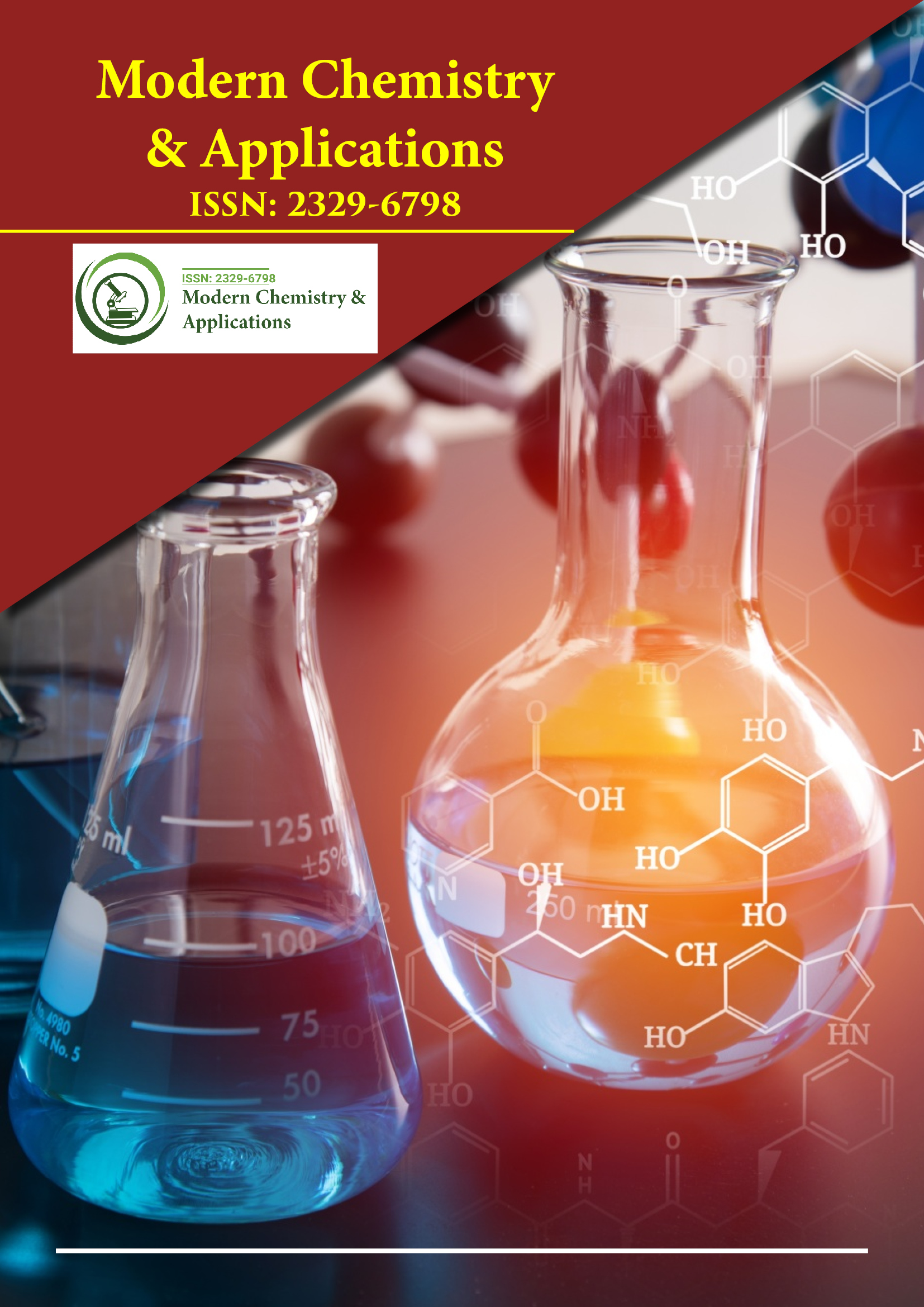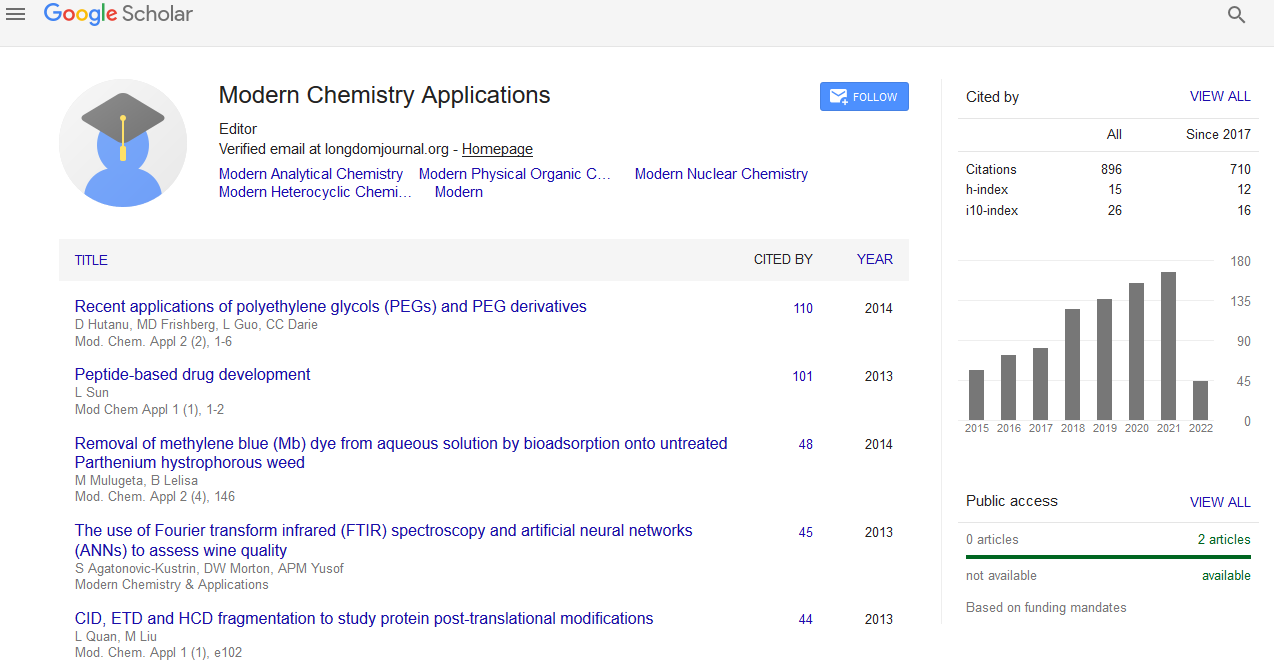Indexed In
- Open J Gate
- JournalTOCs
- RefSeek
- Hamdard University
- EBSCO A-Z
- OCLC- WorldCat
- Scholarsteer
- Publons
- Geneva Foundation for Medical Education and Research
- Google Scholar
Useful Links
Share This Page
Journal Flyer

Open Access Journals
- Agri and Aquaculture
- Biochemistry
- Bioinformatics & Systems Biology
- Business & Management
- Chemistry
- Clinical Sciences
- Engineering
- Food & Nutrition
- General Science
- Genetics & Molecular Biology
- Immunology & Microbiology
- Medical Sciences
- Neuroscience & Psychology
- Nursing & Health Care
- Pharmaceutical Sciences
Detachable photocatalysts of anatase TiO2 nanoparticles: Annulling surface charge for immediate photocatalyst separation
5th Global Chemistry Congress
September 04-06, 2017 | London, UK
Entesar Al-Hetlani, Mohamed O Amin and Metwally Madkour
Kuwait University, Kuwait
Posters & Accepted Abstracts: Mod Chem Appl
Abstract:
TiO2 photocatalysis is commonly utilized in diverse applications such as environmental waste management, biomedical and energy fields. The present study demonstrates the effect of temperature on the characteristics of TiO2 nanoparticles using XRD, XPS, DLS, UV-Vis, N2 sorpometry and TEM techniques. The optimum surface area of the photocatalyst was obtained when it was prepared at 60ºC. Additionally, the TEM images showed semi-spherical morphology. Afterwards, rapid photo-degradation of rhodamine 6G dye (R6G) with efficiency of 92.5% at pH=9.17 was accomplished using the optimized nanoparticles. The main focus of this study is to establish a new avenue that can be used to separate the photocatalyst from the reaction medium after the photo-degradation experiment is completed. In this study, the photocatalyst was completely detached from the reaction medium in 3 minutes without utilization of coagulant agents or magnetic nanoparticles. This was lucratively accomplished by adjusting the pH of the medium to match the isoelectric point (pHPZC) of the photocatalyst and annulling its surface charge, hence rapid sedimentation was observed, Figure 1. This new method has proven to be simple, rapid, and applicable to all types of photocatalysts on the industrial scale.
Biography :
Entesar Al-Hetlani is Lecturer at Kuwait University and currently pursuing her PhD in Chemistry at University of Hull, UK. Her research interest includes “Forensic analytical chemistry, organic and inorganic monolith columns, chemiluminescence and electro chemiluminescence, and synthesis of magnetic nanoparticles.


